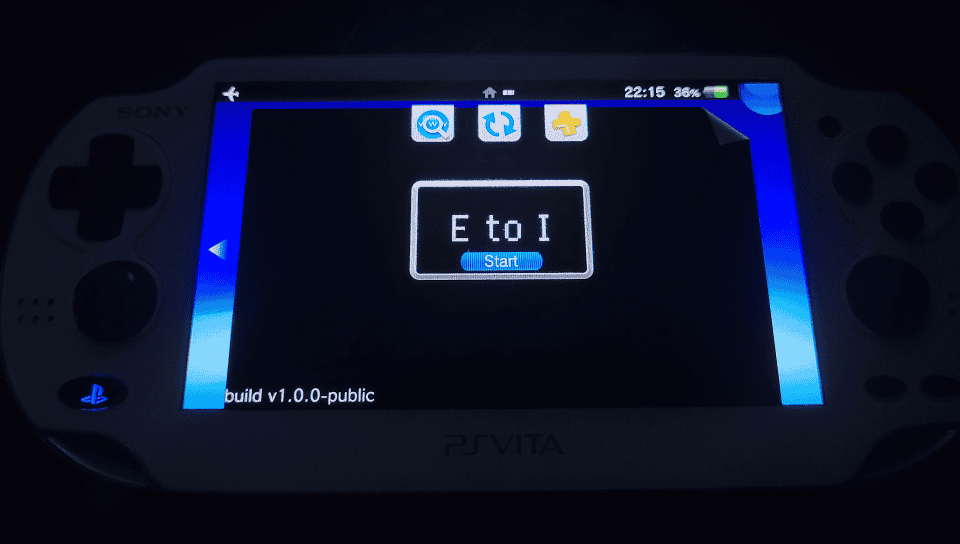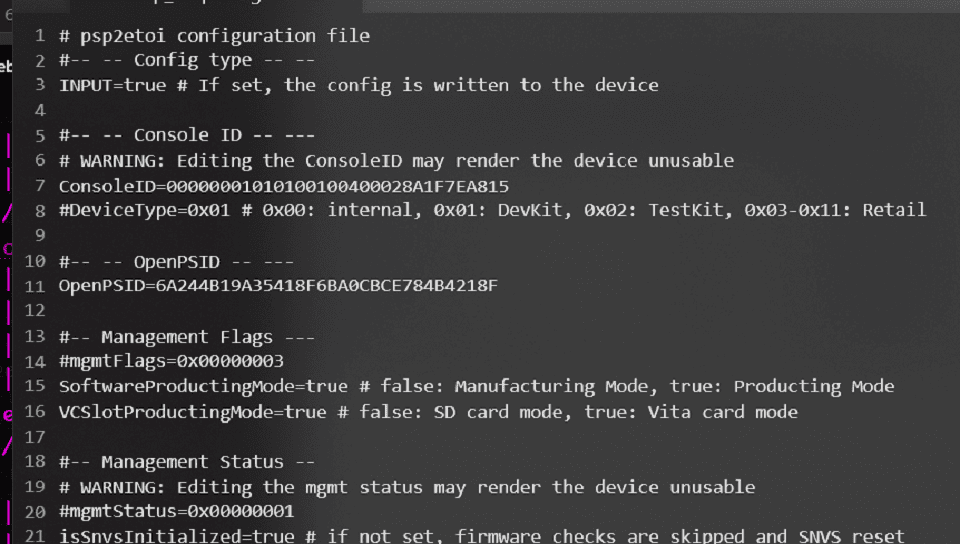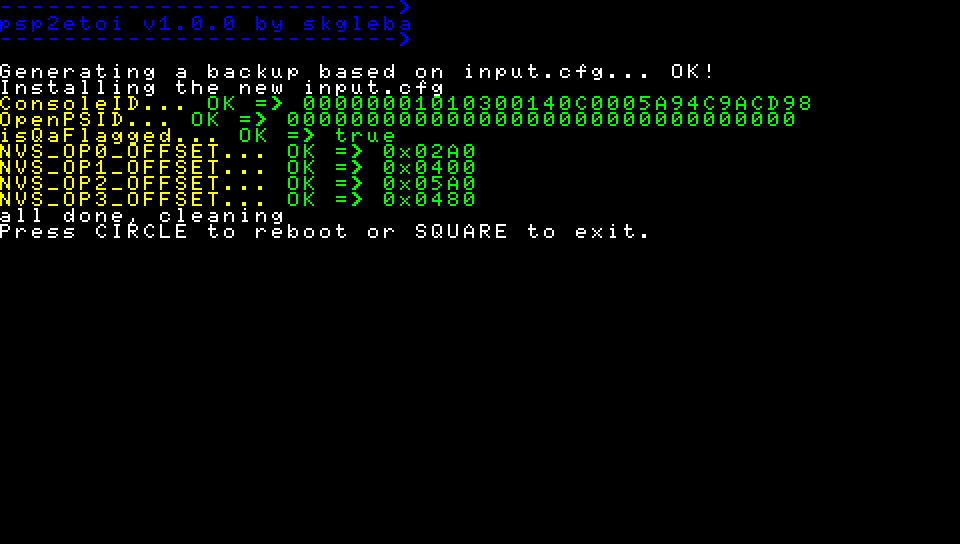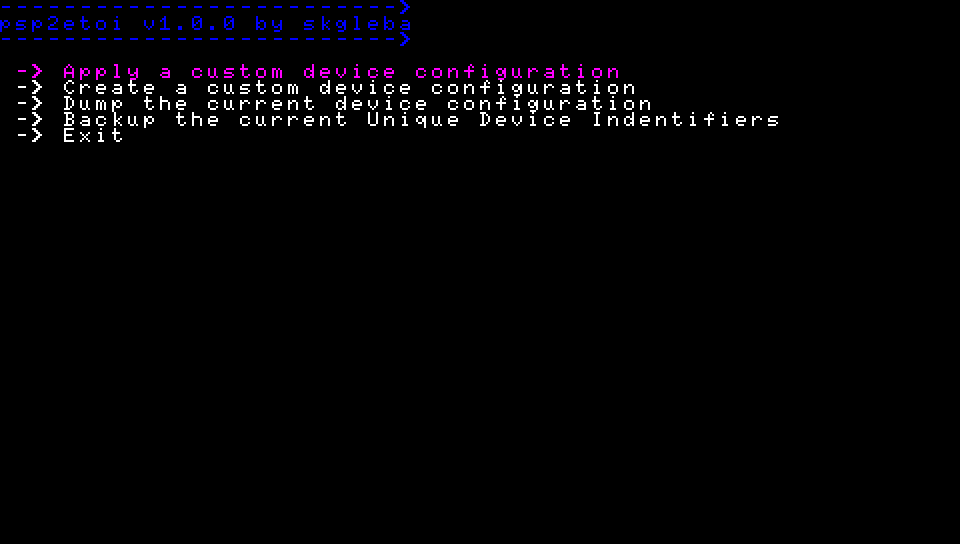More actions
No edit summary |
m (Text replacement - "|discussion=" to "|donation=") |
||
| Line 11: | Line 11: | ||
|website=https://twitter.com/skgleba/status/1679590489866096640 | |website=https://twitter.com/skgleba/status/1679590489866096640 | ||
|source=https://github.com/SKGleba/psp2etoi | |source=https://github.com/SKGleba/psp2etoi | ||
| | |donation= | ||
}} | }} | ||
{{#seo: | {{#seo: | ||
Revision as of 00:59, 14 August 2023
| psp2etoi | |
|---|---|
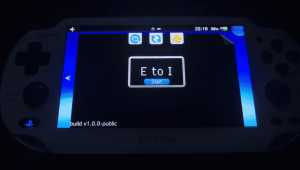 | |
| General | |
| Author | SKGleba |
| Type | System Tools |
| Version | 1.0.0 |
| License | MIT License |
| Last Updated | 2023/07/14 |
| Links | |
| Download | |
| Website | |
| Source | |
psp2etoi is a tool allows you to manage the Unique Device Identifiers (UDIs) on PlayStation Vita/TV consoles.
Usage
Please keep in mind that this tool is intended for advanced users only; a wrong configuration or program bug can lead to unrecoverable system corruption requiring a motherboard replacement.
Prerequisites
Recommended
- The target Playstation Vita/TV console should be running release firmware version 3.65 of type CEX/DEX/TOOL/CFT
- As a form of recovery the console should have enso_ex v5.0 installed and running
Required
- The target Playstation Vita/TV console must be running firmware version between (including) 3.60 and 3.74
- The console must have the taihenkaku CFW framework installed and running
- The psp2etoi.vpk app package should be installed via VitaShell.
Creating a backup
- Open the psp2etoi app and accept the disclaimer.
- Perform a self-test.
- Select "Backup the current Unique...". This will create a backup of the encrypted ConsoleID and OpenPSID.
- Select "Dump the current device...". This will create a backup of the current device configuration and S/NVS.
- Copy the backup files from ux0:data/psp2etoi/ and store them in multiple copies on separate storages.
- The backup files include udi.bin (ConsoleID and OpenPSID in an encrypted format), output.cfg (psp2etoi configuration file), and nvs.bin (dump of the console's S/NVS).
Creating a custom configuration via psp2etoi
Place a configuration file as ux0:data/psp2etoi/input.req. This configuration will serve as a template for the custom configuration. The configuration file must have the INPUT tag set to false. Open the psp2etoi app and accept the disclaimer. Perform a self-test. Select "Create a custom...". This will parse the template and generate a matching configuration. The custom configuration can be found in ux0:data/psp2etoi/custom_input.cfg.
Installing a psp2etoi configuration
- Place the input configuration file as ux0:data/psp2etoi/input.cfg.
- If the configuration requires supplementary files, put them in the same directory (ux0:data/psp2etoi/).
- The input configuration file must have the INPUT tag set to true.
- Open the psp2etoi app and accept the disclaimer.
- Perform a self-test.
- Select "Apply a custom...". This will parse the configuration file and show the expected changes.
- After confirming that the changes are correct, press triangle to write the new configuration.
- A backup configuration file based on the input configuration will be written to backup_input.cfg.
- Copy out the backup files and store them in multiple copies on separate storages. These backups can be used to revert changes made by the input.cfg.
Warning
- It is extremely easy to permanently "brick" your console using this tool, so be cautious.
- Make sure to understand how writing the desired configuration data impacts the device.
- Always double-check the input configuration file and the app's parser output before applying changes.
- Bad ConsoleID type/sub-code should be recoverable with enso_ex v5, provided you have the backed-up udi.bin.
Screenshots
|
|
Changelog
v1.0
- First Release.
Credits
- Team Molecule for taihenkaku, enso and the update_sm cmd 0x50002 heap overflow
- Princess-Of-Sleeping for help and various insights
- All the anonymous friends that tested psp2etoi on their devkits
- Henkaku wiki contributors

